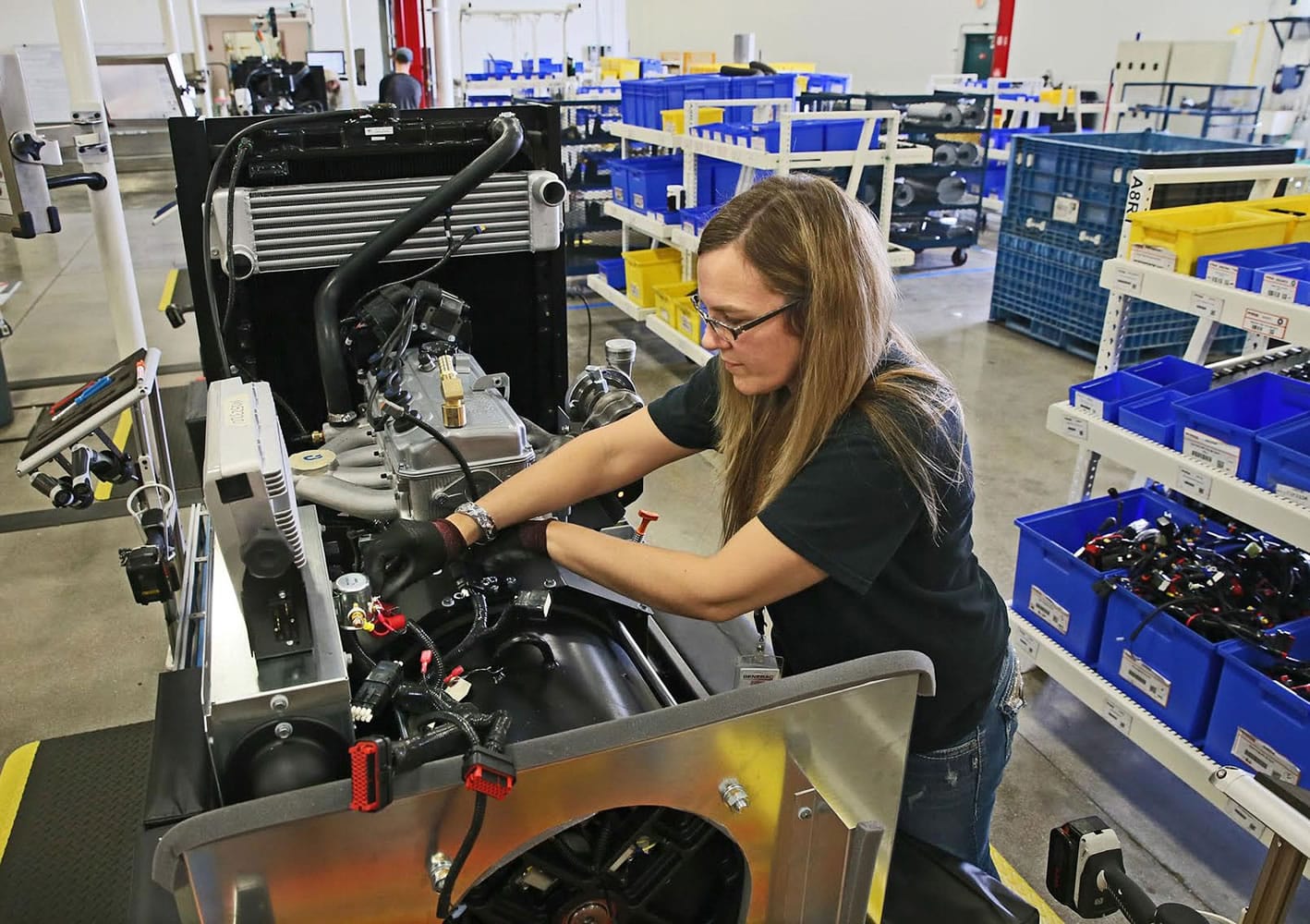MILWAUKEE — When Aleasha Hladilek realized her bachelor’s degree in anthropology wouldn’t get her a job, she returned to school to become an auto mechanic and a welder.
She graduated from the welding program at Wisconsin Indianhead Technical College, in Superior, Wis., and was hired by Northstar Aerospace in Duluth, Minn.
That led Hladilek to a teaching assistant job at the technical college while she also works as a welder for some local companies.
“I have never had a problem finding employment in welding,” said Hladilek, who has been in the field for about eight years.
Manufacturers are having trouble finding people in welding and other skilled trades as a wave of older workers retires and younger people aren’t stepping up to take their place. They say women represent manufacturing’s largest pool of untapped talent, but that it’s difficult to sell them on the careers.
Less than 10 percent of young women placed manufacturing among the top five occupations they felt offered the most opportunity for them, according to a recent survey from the organization Women in Manufacturing and the consulting firm Plante Moran Inc.
Women make up nearly half of the U.S. workforce, but the number of females in manufacturing has been on the decline even as companies clamor for more talent in everything from blue-collar jobs to executive positions.
Across all manufacturing sectors in the U.S., women constitute only about 24 percent of the durable goods manufacturing workforce. The proportion of women in leadership roles in manufacturing companies also lags behind other U.S. industries, a report from Deloitte Consulting LLP and the Manufacturing Institute noted.
It’s a topic that business and civic leaders are just beginning to address, according to Deloitte.
“In the midst of the resurgence of manufacturing in the U.S., companies are facing a widely acknowledged talent shortage. Meanwhile, there’s one obvious source of human capital that the manufacturing industry has not fully tapped: women,” the Deloitte report noted.
• ‘I CAN DO IT ALL’: Wisconsin resident Jennifer Bannink is the type of woman manufacturers want for skilled-trades jobs. A machinist employed in product development for a medical-equipment company, she has a natural curiosity about how things work.
“The nice thing about my job is that I can do it all. I can dream something up, model it on the computer, and actually have it in my hands,” Bannink said.
Bannink grew up on a dairy farm,where she loved tinkering with engines. A tractor, she said, didn’t care whether you were male or female when it came to fixing it.
She left a four-year university after her freshman year and pursued various temporary jobs, eventually settling into metal fabrication work.
“I realized there was no happiness for me in a cubical. I yearned to work behind a toolbox again,” Bannink said.
“It was ultimately why I left my first job,” Spengler said about having to train a man for a position that she wanted but was not offered.
A motorcycle enthusiast, Spengler aspired to work at Harley-Davidson.
“Harley is really good about hiring women. I would like to see more women step up in manufacturing and not be held down at lower positions,” Spengler said.
Spengler, who has been a union steward, says she hasn’t personally felt any bias in her current job.
Today’s factories are more likely to be clean, bright, automated workplaces, compared with some dark, dirty plants of the past. It’s not all that way, and there’s nothing wrong with getting a little dirty when the job requires it, but overall the plants are better places to work, according to local companies.
“We need to be sure that we are branding manufacturing for what it is today, and not what it has been in the past,” said Rhonda Matschke, senior vice president of human resources at Generac Power Systems.
“It was just a normal thing at Briggs,” said Ross Winklbauer, a United Steelworkers subdistrict director who worked at the company years ago.
Some men felt that women couldn’t do certain jobs in the plant, but they were quickly proved wrong, Winklbauer said.



